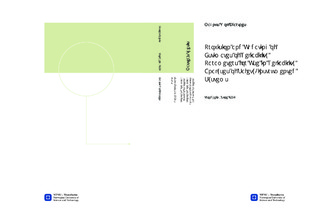| dc.description.abstract | Safety-instrumented systems are implemented in the industry to prevent accidents to occur and escalate. The blowdown system on a oil production ship is one example of such system. If a fire breaks out on the ship, the blowdown system's role is to remove the flammable gases from the current production lines on the ship. This is done by opening of the blowdown valves, that are installed on the different production lines. In this thesis, the blowdown system on a new Teekay ship, and espesically the valves, are applied as case. Since such systems are imporant to maintain the safety on the installation, they are subject to strict reliability performance requirements. Before the SIS is put into operation, it is required to state a certain reliability target for the system. At present, Teekay estimates the reliability based on generic reliability data or reliability data provided from the manufacturer of the equipment. There are uncertainties related to both of these sources. Generic reliability data are collected from different installations where the equipment are operating under different conditions and environment. The reliability is affected by its surroundings, and the generic data then reflects the average reliability in the entire industry. This implies that this data may not be accurate for equipment on a new ship, which has brand new equipment. The manufacturer data, on the other hand are tested under controlled conditions, typically in a laboratory. This implies that the reliability reflects how the equipment performs when it is applied just as intended by the manufacturer. In industry, the equipment will most likely be handled more thoughly, and failures can be introduced during for example, maintenance. This thesis suggests a new way of predicting the reliability. The estimated reliability is based on the mentioned sources, in addition to reliability data collected from the other ships in the Teekay fleet. By using expert opinions (e.g., opinions from operators and engineers) these sources are weighted to create a best possible estimate of the reliability. From these estimates, a probability distribution is constructed. This distribution states how likely the different estimates of the reliability are, where the thesis suggests to choose a rather conservative estimate even if it is not the most likely estimate. After the system is put into operation, failure data becomes available from operation and testing. This data constitutes a reliability estimate based on operational data alone. Since safety systems are designed to be highly reliable, few failures occur and this estimate is uncertain. Because of this, the thesis provides a method on how the operational data can be included in the probability distribution constructed in the design phase. As more operational data become available, the less is the contribution from the design phase assumptions. If it comes to a point where the operational data proves that the reliability of the system differs significantly from what was assumed, it can be assessed whether the regular testing of the system can or should be changed. This thesis suggests that only operational data should be applied to decide such a change. A point which indicates that a sufficient amount of operational data is collected to trust this estimate solely, is provided. Teekay performs annual testing on the entire blowdown system where the results are recorded and applied in further reliability calculations. In addition to these test, they perform monthly manual testing on the blowdown valves. This is because the valves fail more often than the other parts, and the operators on the ship want to be sure that they are functioning. It is shown how these tests influence on the average availability of the valves, and it is discussed how these tests can be applied as a means to increase the length between the more comprehensive annual tests. The last part of the thesis investigates the uncertainty aspects related to the provided methods, models, and other relevant aspects in the process of collecting and applying reliability data. It is shown that there are a high degree of uncertainty related to all the aspects. Application of generic reliability data is a high contributor to uncertainty. The thesis provides a method on how the generic data can be compared to the data collected in Teekay. This comparison aims at providing a factor which reflects how the specific conditions on Teekay ships influences the reliability, compared to the average reliability found in generic data sources. | nb_NO |

